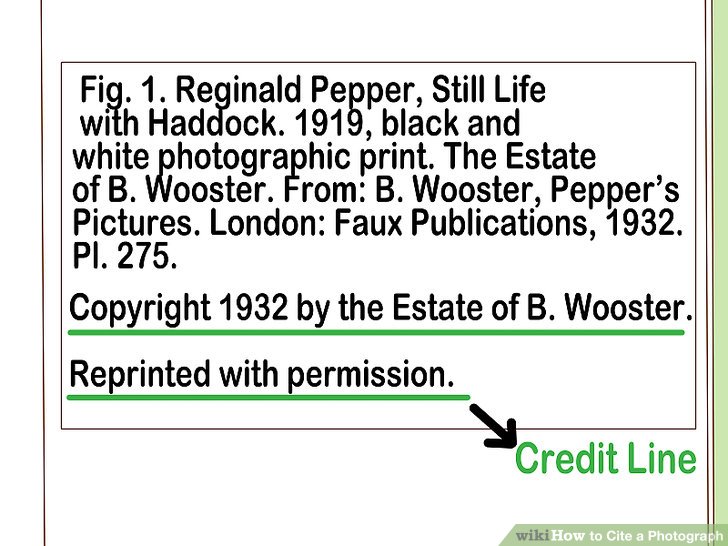Introduction to Citing Getty Images

Citing Getty Images correctly is crucial for anyone who uses these stunning visuals in their work. Whether you’re a blogger, student, or professional, proper citation not only gives credit to the creators but also protects you from potential legal issues. In this guide, we’ll break down the essentials of citing Getty Images, making it easy and straightforward. Let’s dive in!
Also Read This: Does Adobe Stock Accept AI-Generated Images? Exploring the Submission Criteria
Understanding Copyright and Licensing for Getty Images
When you think about using images from Getty, it’s important to understand the concepts of copyright and licensing. These terms are the backbone of how you can use these stunning visuals legally. Here’s what you need to know:
1. Copyright Basics
Copyright is a legal protection that gives the creator of an original work exclusive rights to its use and distribution. This means that the moment a photo is taken, it’s protected by copyright laws. For Getty Images, this is especially important because:
- Every image you see is owned by someone.
- Using an image without permission can lead to legal consequences.
- Even altering an image doesn’t negate copyright infringement.
2. Licensing Types
Getty Images offers several types of licenses for their images. Understanding these will help you choose the right one for your needs:
- Royalty-Free (RF): Allows you to use the image multiple times after a one-time purchase. You don’t need to pay royalties for each use.
- Rights Managed (RM): Grants you specific rights based on how you will use the image. Costs can vary depending on usage rights.
- Editorial Use Only: These images are meant for reporting news or events. You can’t use them for commercial purposes.
3. Importance of Proper Licensing
Choosing the correct license is vital for several reasons:
- It ensures you’re legally protected.
- It supports the artists and photographers who create these images.
- It maintains the integrity of your work by using visuals appropriately.
In summary, understanding copyright and licensing when using Getty Images is essential for anyone who wants to utilize visual content ethically and legally. Always take the time to read the license agreement and ensure you’re following the rules. This not only protects you but also shows respect for the creators behind those stunning images!
Also Read This: Get to Know How Many Images Shutterstock Has
3. Step-by-Step Process for Citing Getty Images
When it comes to using Getty Images in your work, it's essential to give proper credit to the creators. Not only does this show respect for their artistry, but it also helps you avoid potential copyright issues. Here’s a simple, step-by-step process to ensure you’re citing Getty Images correctly:
- Identify the Image: Start by locating the specific Getty Image you wish to use. Make sure to note its title, image number, and the name of the photographer or contributor.
- Check the Licensing Information: Before you proceed, verify the licensing terms. Getty Images often provides different licenses, such as “Royalty-Free” or “Rights Managed.” Understanding these terms ensures you're using the image legally.
- Gather Citation Details: For a complete citation, you need the following details:
- Title of the image
- Photographer’s name
- Year of publication
- Image number (if available)
- URL where the image is located
- Choose Your Citation Style: Depending on your work's requirements (academic, professional, or personal), decide whether you’ll cite your image in APA, MLA, or Chicago style. This will guide how you format your citation.
- Format Your Citation: Using the details gathered earlier, format your citation according to the chosen style. Each format has specific rules, so it’s crucial to follow them closely.
- Add the Citation to Your Work: Finally, include the citation in your bibliography or reference list. If you’re using the image in a presentation or article, place the citation beneath the image itself, ensuring it’s visible.
Following this process will help you maintain integrity in your work while honoring the creators behind the images.
Also Read This: Shutterstock Coupon Code: Discounts for Your Stock Image Purchases
4. Common Citation Formats for Getty Images
Citing Getty Images correctly is crucial, and various citation styles have specific rules to follow. Here’s a breakdown of how to cite Getty Images using the most common formats:
1. APA Format
In APA style, the citation for a Getty Image looks like this:
Author, A. A. (Year). Title of the image [Description]. Site Name. URL
Example:
Smith, J. (2023). Beautiful sunset over the mountains [Photograph]. Getty Images. https://www.gettyimages.com/photo/beautiful-sunset
2. MLA Format
In MLA style, you’ll format it as follows:
“Title of Image.” Title of Website, by Author’s Name, Year, URL.
Example:
“Beautiful Sunset Over the Mountains.” Getty Images, by John Smith, 2023, https://www.gettyimages.com/photo/beautiful-sunset
3. Chicago Format
In Chicago style, the citation is structured like this:
Author Last Name, First Name. Year. “Title of Image.” Title of Website. URL.
Example:
Smith, John. 2023. “Beautiful Sunset Over the Mountains.” Getty Images. https://www.gettyimages.com/photo/beautiful-sunset
Regardless of the format you choose, the key is to remain consistent throughout your work. When in doubt, always refer back to the specific style guide for detailed instructions. This not only enhances your credibility as a creator but also supports the artists behind the images you admire!
Also Read This: How to Download Watermarked Photos on Getty: How to Access Preview Images Legally
5. Examples of Citing Getty Images in Different Styles
Citing images correctly is crucial to maintaining integrity in your work, especially when using resources like Getty Images. Here’s a quick reference guide on how to cite Getty Images in various popular citation styles:
APA Style
In APA style, a citation for a Getty Image includes the creator's name, the year the image was created, the title of the image in italics, and the source link. Here’s how it looks:
Smith, J. (2020). Sunny Beach at Dusk [Photograph]. Getty Images. https://www.gettyimages.com/photo/sunny-beach-at-duskMLA Style
For MLA, the format changes slightly. You’ll include the creator’s name, the title of the image in italics, the website title, the publisher, and the URL:
Smith, John. Sunny Beach at Dusk. Getty Images, 2020, www.gettyimages.com/photo/sunny-beach-at-dusk.Chicago Style
In Chicago style, the citation can be formatted in two ways: a note format and a bibliography format. Here’s how you would do it in the bibliography:
Smith, John. Sunny Beach at Dusk. Getty Images, 2020. https://www.gettyimages.com/photo/sunny-beach-at-dusk.Visual Example
If you are visualizing your citations, consider using a table to summarize these styles for easy reference:
| Style | Format |
|---|---|
| APA | Smith, J. (2020). Sunny Beach at Dusk [Photograph]. Getty Images. URL |
| MLA | Smith, John. Sunny Beach at Dusk. Getty Images, 2020, URL. |
| Chicago | Smith, John. Sunny Beach at Dusk. Getty Images, 2020. URL. |
Using these examples as a guide will help you ensure that your citations are accurate and professional. Remember, the key is consistency and accuracy!
6. Tips for Avoiding Common Citation Mistakes
Citing images might seem straightforward, but it’s easy to make mistakes. Here are some helpful tips to help you navigate the process without a hitch:
- Double-Check Your URLs: Ensure that the links you provide are accurate and lead to the correct image. A broken link can undermine your credibility.
- Include All Necessary Information: Always cross-reference the details like the creator's name, title of the image, and date. Missing information can lead to confusion.
- Be Consistent: Stick to one citation style throughout your document. Switching styles can confuse readers and reflect poorly on your work.
- Use Italics Where Required: Remember to italicize titles where applicable, especially in APA and MLA styles. This small detail is often overlooked.
- Stay Current: Citation styles can evolve. Regularly check the latest guidelines from reliable sources to ensure compliance.
By following these tips, you can avoid the pitfalls that often come with citing images. It’s all about being thorough and attentive to detail. Happy citing!
 admin
admin








